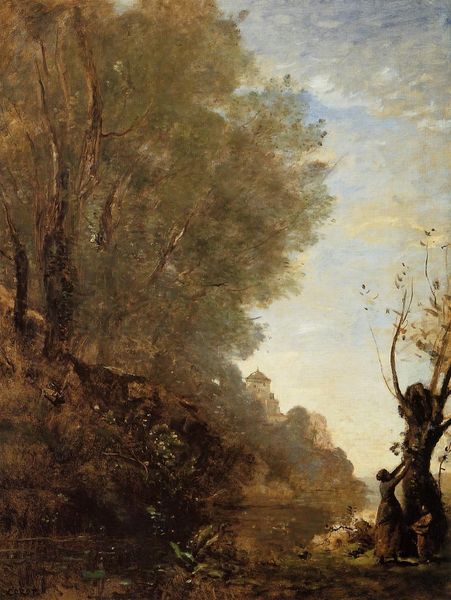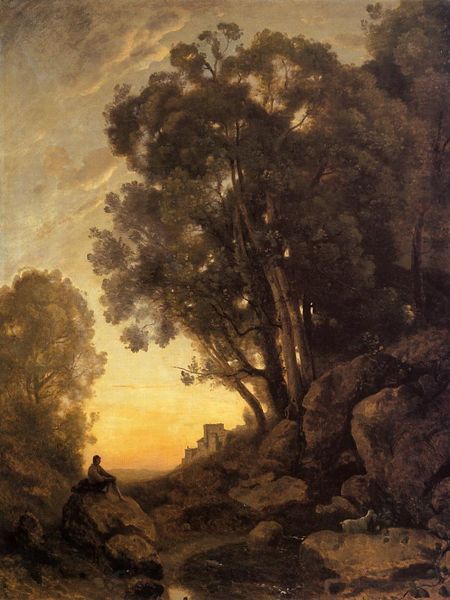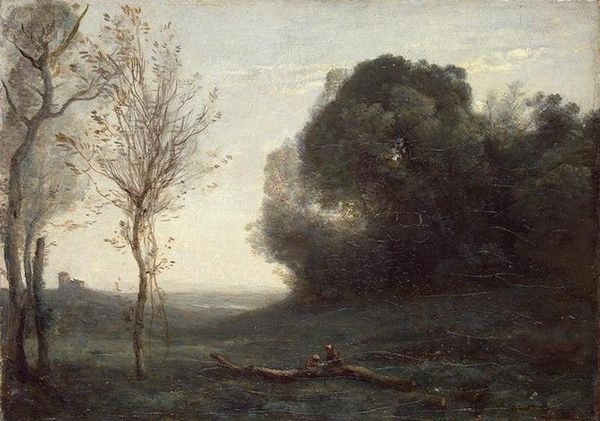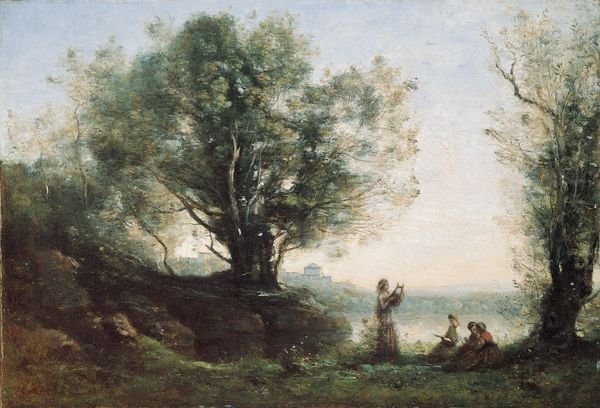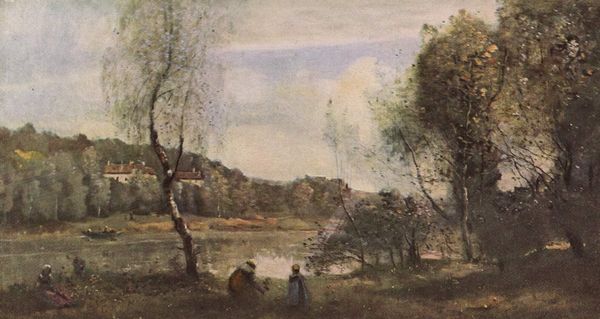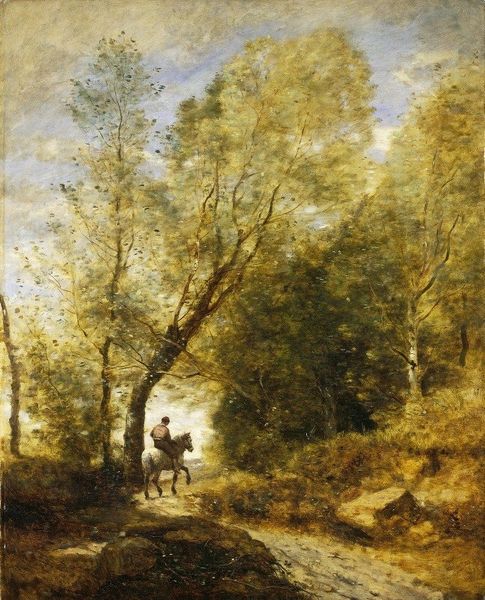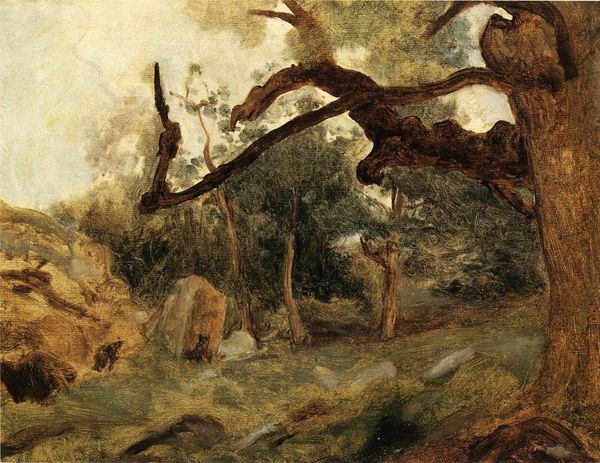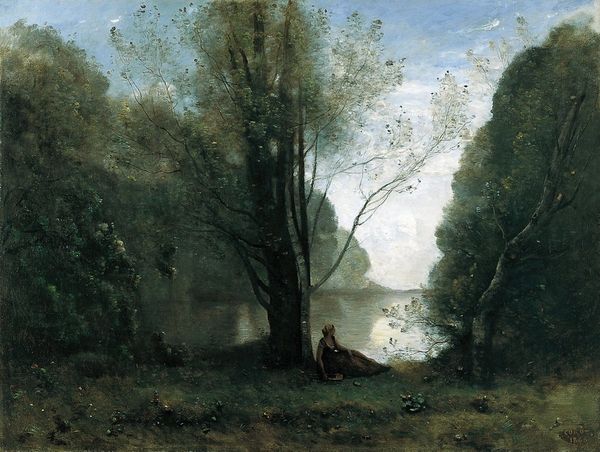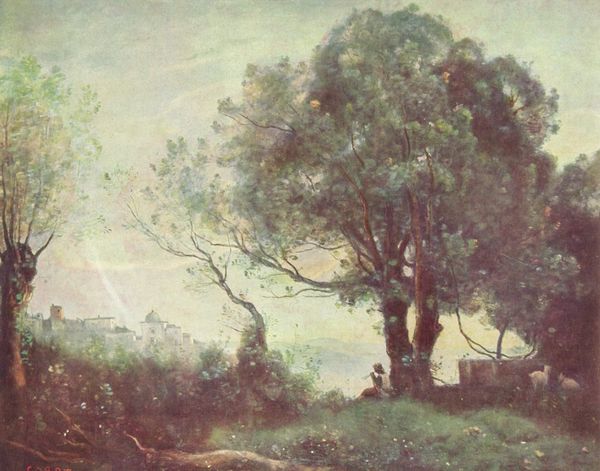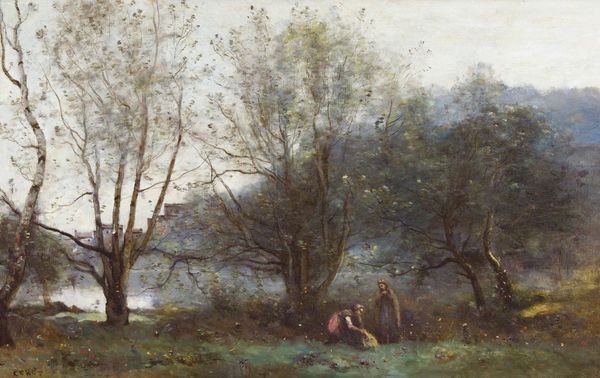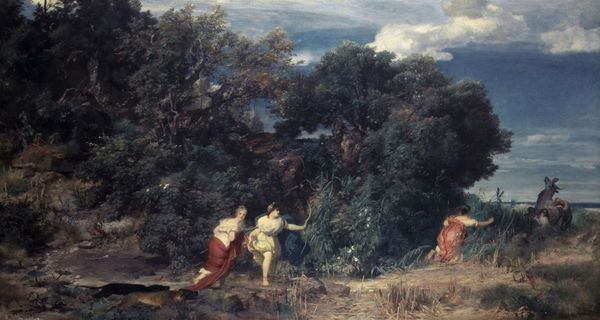
Dimensions: 65 x 89 cm
Copyright: Public domain
Curator: I find myself utterly transported by the evocative atmosphere of Camille Corot’s "Recollections of Mortefontaine." The soft, diffused light and delicate brushwork create a scene of tranquil reverie. What is your initial impression? Editor: My first thought is one of sentimental yearning. It evokes a past idyll. But this is also a study of contrasting forms. Observe the contrast between the robust trees in the foreground with that ephemeral light in the back, a dialogue between nature and atmosphere, creating the very distinct painterly mood Corot is famous for. Curator: Absolutely. It exemplifies Corot’s mastery of tonal painting. It invites us to analyze the composition and construction. See how his deliberate use of silvery grays and soft greens establishes a delicate, harmonious balance across the canvas. It is this very balanced visual harmony that evokes its poignant sensation. Editor: I am interested in the socio-political forces that shaped its reception and production. Consider that mid-19th-century France was undergoing rapid industrialization and urbanization. "Recollections of Mortefontaine", finished in 1864, offers an idealized escape. We must examine how those idyllic visions impacted French landscape painting and shaped emerging bourgeois national identity. Curator: That historical framing offers a way into grasping the art’s function within the larger context. Yet when focusing purely on the intrinsic elements, one is still struck by the visual layering and complexity within its surface. Consider the texture he achieves, from nearly transparent glazes in the distance to those impasto touches bringing forth form at the foregrounded treeline, so the symbolic weight and affect are primarily located there. Editor: I believe that it’s impossible to separate these artistic gestures from their social resonances, that one shapes the other, whether or not consciously for the artist. These visions of France’s landscape history as picturesque is always imbued with contemporary societal issues, especially surrounding the rapidly modernizing world it’s responding to. It reminds me of that old question—where does reality end and ideology begin? Curator: Ultimately, through the intricate language of painting, Corot successfully composed more than merely a landscape. He articulated feeling, he created the sensation and atmosphere of a moment passed and then recollected—making a visual symbol from an experienced time. Editor: It makes one wonder whether these 'recollections' truly reflected a real past, or an imagined ideal shaped by his time, which for all practical purpose ends up the same. Both shaped a vision that proved irresistible.
Comments
artera almost 2 years ago
⋮
Jean-Baptiste-Camille Corot (1796-1875) began his carer as a draper, before deciding to pursue atistic training. He traveled widely throughout his life- on his trips he made numerous oil sketches and plein air paintings capturing the immediacy of light and atmosphere, while also working on exhibition-style paintings within the studio. Souvenir de Mortefontaine is one of the best paintings from his late career, and is bathed in a soft, diffuse light. It is a work of utter tranquility, the epitome of a lyrical and poetic assimilation of the artist's world. The scene is not taken from nature, but combines key elements of the natural setting to create the perfect, harmonious image. The graceful tree in the foreground, the expanse of stil water behind and quiet figures picked out in soft color were motifs used often by the artist to render a work of beautiful, quiet reflection. Working at first along the lines of the Realists, Corot's style developed to encompass a dreamy, Romantic perception. As such, his work can be considered something of a bridge between the Realis and the Impressionists, and indeed he is often refered to as the father of Impressionism.
Join the conversation
Join millions of artists and users on Artera today and experience the ultimate creative platform.

